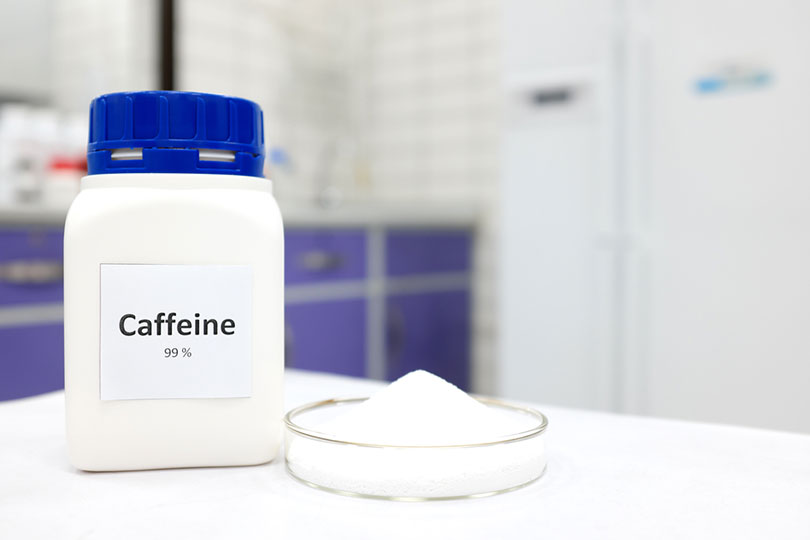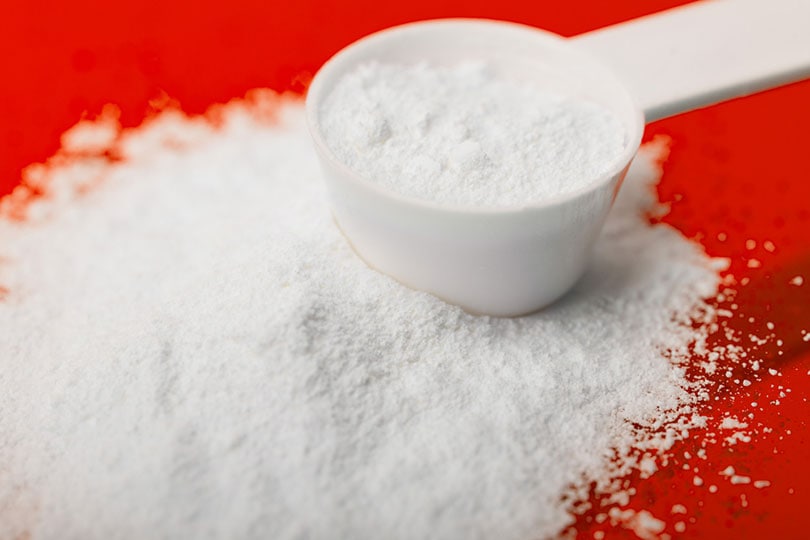
In recent years, there have been stories in the news of people, teenagers mostly, who have died of caffeine overdoses. Of course, this raises the question of just how dangerous caffeine is and how much is too much for a body to handle. The answer depends on the amount of caffeine you ingest and whether you have any caffeine sensitivities.
However, how much caffeine is in caffeine powder? Is it recommended? How does it compare to coffee and other caffeinated beverages? Is it dangerous? One teaspoon of caffeine powder contains about 4,700 mg of caffeine!
We’ll answer all these questions about caffeine powder in the blog below, so stay tuned.

How Much Caffeine Is in Caffeine Powder?
While the FDA has issued an alert on the dangers of caffeine powder, it can still be purchased in bulk online.
It is estimated that one teaspoon of caffeine powder contains 4,706 mg of caffeine. That’s a lot of caffeine, and while it can be purchased to heighten the caffeine content in foods and drinks, it’s not recommended. In fact, one teaspoon of this powder is the same as drinking about 28 cups of coffee.
It is also said to be one of the most dangerous caffeine-containing products on the market today.

Caffeine Powder vs. Other Caffeine Products
Most people get their caffeine rush by drinking coffee throughout the day, but some turn to caffeine powders, caffeine pills, and other products. We’ll give you a comparison of the caffeine in a few below.
Remember, caffeine powder contains 4,706 mg of caffeine per teaspoon, and the caffeine content is considered dangerous.
| Caffeine pills: 200 mg per pill | Caffeine content: Very high |
| Awake chocolate: 110 mg per bar | Caffeine content: High |
| Jolt gum: 45 mg per piece | Caffeine content: Moderate |
| Hershey’s Special Dark Bars: 20 mg per bar | Caffeine content: Low |
As you can see, there are caffeine products that contain less caffeine than caffeine powder, and they aren’t as bad for you.
In our next section, we’ll answer some of your most pressing questions about the dangers of caffeine powder.
What Is Caffeine Powder?
Caffeine occurs naturally in more than 60 plants, as well as coffee beans, cacao, and tea leaves, but the powder makes it possible for you to add more caffeine to food and drinks.
https://www.instagram.com/p/CQxzrfxtH1E/
Is Caffeine Powder FDA-Regulated?
The FDA regulates supplements, but it considers them food rather than drugs. However, they have sent out warnings about caffeine powder, especially amid the fatalities from caffeine overdoses.
Can You Overdose on Caffeine?
The answer to this question is a resounding yes, though the amount of caffeine that causes you to overdose differs for everyone.
5,000 to 10,000 milligrams of caffeine is considered to be the lethal amount. An overdose of caffeine can lead to heart issues and death. Therefore, it’s essential to watch your caffeine intake and refrain from giving it to children, especially in the form of a caffeine powder.

What Are the Symptoms of Caffeine Overdose?
Now that you know a little about caffeine powder and caffeine in general, you might be wondering what the symptoms of a caffeine overdose are.
- Shallow, rapid breathing
- Nausea
- Dizziness
- The jitters
- Heart palpitations
- Elevated heart rate
- Insomnia
If you suspect that you or someone you know is suffering from a caffeine overdose, it’s essential to get to an emergency room immediately since a severe overdose can be lethal.

Final Thoughts
Caffeine powder contains a significant amount of caffeine and isn’t recommended for use. However, if you use the powder, be careful how much you put in your food and drinks because even two teaspoons can be lethal to an adult, much less a child.
It might be best to stick to that cup of Joe in the morning to get your caffeine jolt; it’s safer and tastes better as well.
Featured Image Credit: sulit.photos, Shutterstock















